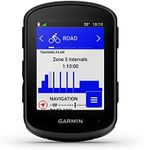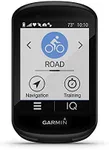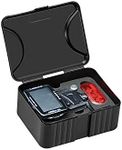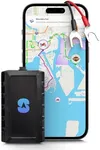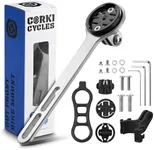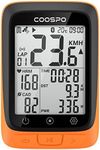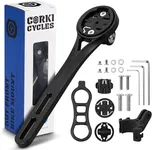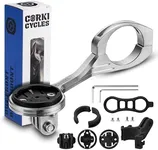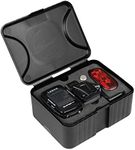Buying Guide for the Best Gps Device For Bikes
Choosing the right GPS device for your bike can greatly enhance your cycling experience, whether you're a casual rider, a commuter, or a serious cyclist. A good GPS device can help you navigate unfamiliar routes, track your performance, and ensure you stay on course. To make an informed decision, it's important to understand the key specifications and how they align with your needs.Screen SizeThe screen size of a GPS device determines how easily you can read the information displayed. Larger screens (3 inches and above) are easier to read and navigate, especially while riding, but they can be bulkier. Smaller screens (below 2 inches) make the device more compact and lightweight, which is ideal for minimalists or those with limited handlebar space. Choose a screen size that balances readability and convenience based on your riding style and preferences.
Battery LifeBattery life is crucial, especially for long rides or multi-day trips. GPS devices with longer battery life (15 hours or more) are ideal for endurance cyclists and bikepackers. For shorter rides or daily commutes, a device with a battery life of around 8-10 hours may suffice. Consider how long your typical rides are and whether you have opportunities to recharge the device during your activities.
Mapping and NavigationMapping and navigation features vary widely among GPS devices. Basic models may offer simple breadcrumb trails, while advanced models provide detailed maps, turn-by-turn directions, and route planning. If you frequently explore new areas or need precise navigation, opt for a device with comprehensive mapping capabilities. For casual riders who stick to familiar routes, basic navigation features may be sufficient.
ConnectivityConnectivity options like Bluetooth, ANT+, and Wi-Fi allow your GPS device to sync with other devices and apps, such as heart rate monitors, power meters, and smartphones. This can enhance your training and provide additional data. If you use multiple devices or want to upload your rides to apps like Strava, choose a GPS device with robust connectivity features. For those who prefer simplicity, a device with basic connectivity may be adequate.
Durability and Weather ResistanceDurability and weather resistance are important for ensuring your GPS device can withstand the elements. Look for devices with an IPX7 rating or higher, which means they can handle rain and splashes. If you ride in harsh conditions or off-road, a more rugged device with shock resistance may be necessary. For fair-weather riders, standard weather resistance should be sufficient.
Data Tracking and AnalysisData tracking and analysis features allow you to monitor your performance and progress. Advanced GPS devices offer metrics like speed, distance, elevation, heart rate, and power output. If you're training for an event or looking to improve your performance, choose a device with comprehensive data tracking. Casual riders may only need basic metrics like speed and distance.
Ease of UseEase of use is essential for a seamless riding experience. Consider the user interface, button layout, and overall design of the GPS device. Touchscreen models can be more intuitive but may be harder to use with gloves. Button-operated models are often more reliable in various weather conditions. Choose a device that you find easy to operate, especially while on the move.
